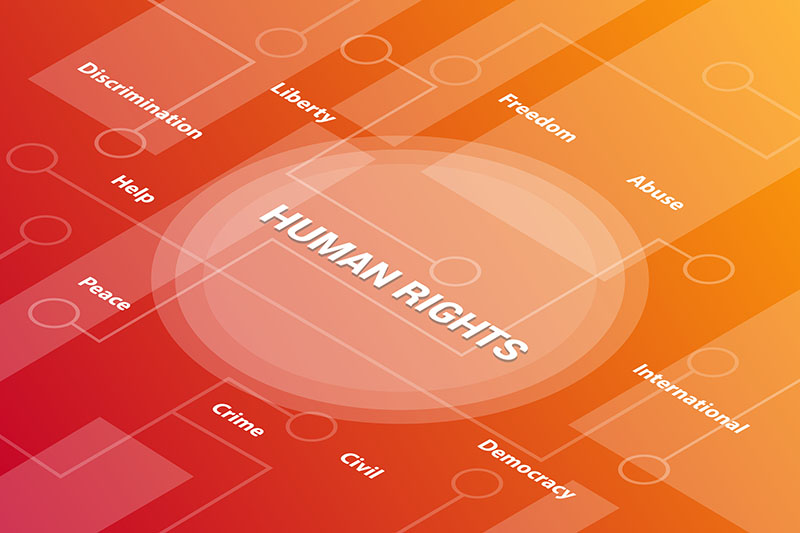Editor’s Note: Hanne McBlain is senior director at technology research and advisory firm ISG.
The United Nations and international labor organizations estimate that more than 40 million people worldwide are subject to modern slavery, including forced labor, debt bondage, forced marriage, slavery and slavery-like practices and human trafficking. The probability of finding slavery deep in enterprise supplier tiers could be as high as 70 percent. Every enterprise has a legal and ethical obligation to ensure that its supply chain does not contribute to human exploitation.
Legislation in countries around the world is addressing the topic of modern slavery. Germany, Norway, Australia, France, Netherlands, California, and the U.K. have all passed laws that mandate private sector companies to eradicate human exploitation. Very soon, we should expect the rest of the European Union, Canada and Hong Kong to follow.
These new laws require businesses to annually report on how they audit their suppliers for slavery risks, as well as the specific policies, procedures and training they have put in place to verify the integrity of their supply chains, and the latest legislation puts financial penalties behind a failure to do so. As the enterprise supply chain has become more and more complex, knowing what every player in your provider ecosystem is doing has become a challenge.
Many organizations have thousands or even tens of thousands of suppliers—far too many to contemplate mapping and monitoring by hand. Still, they are being held accountable. This is why supplier management that is thorough enough to ensure modern slavery compliance cannot be done without technology. For many companies, this is part of a larger conversation about environment, social and corporate governance (ESG).
Frequently Asked Questions
How can enterprises prepare for modern slavery legislation?
To comply with the proper reporting and meet the necessary requirements for your government mandate, companies must lay a foundation and then build on it. As with other legislative issues, there must be a mindset of continuous improvement. So just because you get it right once doesn’t mean you don’t need to keep improving on it. First, create a project team to understand the modern slavery legislation. This is not a one-person job. This team should include legal, finance, risk and representatives from the business. Then you need to develop a modern slavery framework and the appropriate procedures and policies to address the requirements inside the overall risk management framework.
The graphic below shows the five core pillars for effective modern slavery and risk management.
What can we do to mitigate the risk of modern slavery in our supplier environment?
There are four main steps to follow:
Ask for your suppliers’ codes of conduct. Include language in your contract that clearly states we expect you to behave in a certain manner in terms of human exploitation. Introduce these protections into your environment and integrate it into how you do work. Is there technology that can help me track third-party risk? Only a smart technology that is made specifically for this purpose can track your suppliers – and their suppliers – to adequately inform you of the potential risks. In Germany, the legislation refers to both direct and indirect suppliers, so the web of the provider ecosystem can quickly become overwhelming. An effective news and alert mechanism will let you know when a particular organization has been linked to unsavory practices. And, because the market is dynamic, this information gathering must be constant and agile. On top of routine risk management activities, companies need to look at their suppliers’ code of conduct and be prepared to enforce contract clauses that uphold the legislation. Do they have ethical sourcing whistleblower policies? Do they have governance around their enterprise? What should my organization do if we discover a case of modern slavery in our supply chain? Alert the authorities of your findings and ensure the laws are being enforced. Intervening yourself could do more harm than good. Stay vigilant in your mapping and monitoring and protect yourself with a sure-fire tracking mechanism going forward. What can I do to put pressure on our suppliers to eradicate modern slavery? Companies can deselect the suppliers you know are potentially introducing human exploitation into your supply chain. You can join global associations that are publicly working toward the eradication of modern slavery. There is a groundswell of activity on this issue from consumers who care about the kinds of brand they support; they are voting with their dollars. But the increasingly complex provider ecosystem means the days of mapping your suppliers with spreadsheets is over. The stakes are too high. To truly get your arms around your supply chain and comply with legislation, you must build a modern slavery framework, make sure your policies are up to date, map your supply chain and stay constantly up to date. Your environment is almost never static, so you must continuously review your provider ecosystem.SC
MR


Latest Supply Chain News
- How CPG brands can deliver on supplier diversity promises
- How S&OP provides the answer to in-demand products
- AI, virtual reality is bringing experiential learning into the modern age
- Humanoid robots’ place in an intralogistics smart robot strategy
- Tips for CIOs to overcome technology talent acquisition troubles
- More News
Latest Podcast

 Explore
Explore
Business Management News
- How CPG brands can deliver on supplier diversity promises
- How S&OP provides the answer to in-demand products
- AI, virtual reality is bringing experiential learning into the modern age
- Tips for CIOs to overcome technology talent acquisition troubles
- There is still work to do to achieve supply chain stability
- Blooming success: The vital role of S&OE in nurturing global supply chains
- More Business Management
Latest Business Management Resources

Subscribe

Supply Chain Management Review delivers the best industry content.

Editors’ Picks





